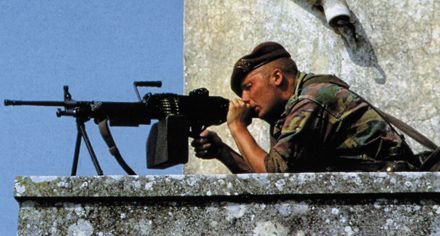OPERATION RED DRAGON
Red Dragon was an operation led by Belgium’s 1st paracommando regiment in 1964 to free thousands of hostages held in the city of Stanleyville in Congo.
Congo-Leopoldville gained its independence from Belgium in 1960 and immediately fell into chaos. Between 1960 and 1965, the Congolese authorities had to face attempted secession from the provinces of Katanga and South Kasi, army munities and rebellions.
One of those rebellions was the Simba uprising in 1964. Led by Maoists and “Medecine men” (Shamans), they spread like wildfire through a disorganised Congo and within weeks, controlled about half of this huge county. In August 1964, they captured the strategically important city of Stanleyville (Kisangani). Thousands of Congolese were rounded up and executed alongside government officials, teachers and any people believed to have been “westernised”.
The Simbas then moved into the province of Kasai, a region rich in minerals. The Prime Minister Moise Tshombe reached out for help to prop up the disorganised and demoralised Congolese armed forces. He hired around 200 white mercenaries and Katangese Gendarmes (Police officers) who had served the Belgian Colonial Authorities prior to the independence. His bet paid off and the Simbas were thoroughly defeated in the Kasai.
Things escalated from there as the Simbas appealed to the Soviet Union for help and started rounding up white residents living in the territory they controlled and holding them hostage. The Soviet Union and Cuba sent in supplies and instructors/advisors. The Congolese leader countered by hiring even more white mercenaries acting as shock troops. He also appealed for help to Belgium and the USA.
Red Dragon-Dragon Rouge-Rode Draak
14 C-130 Hercules belonging to U.S. Air Force 322nd Air Division based at Evreux in France were involved as well as 350 Belgian Paracommandos. The US C-130 flew from France to the Belgian base of Kleine Brogel to pick up the Belgian paras. The planes then flew to Spain to refuel, then onto the island of Ascension before flying the last leg of the journey to Congo.
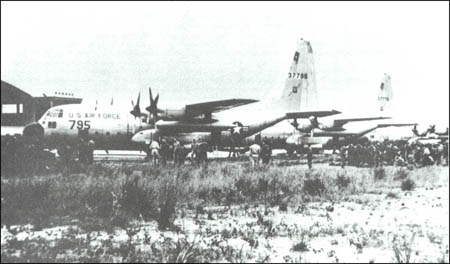
On the 24th of November at dawn, Belgian paras jumped over Stanleyville airport under heavy fire. Within 40 minutes, they secured the airport and cleared the landing strip of the obstacles that had been placed there to obstruct it, allowing the other planes carrying reinforcements and equipment to land.
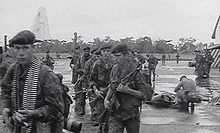
Now that the airport was secured, time was of the essence: The Simbas in Stanleyville proper had already started rounding up their white hostages and executed several of them. The Belgian soldiers made their way to the town where they linked up with a column of mercenaries. They then proceeded to clear the town of the rebels, liberating hostages as they went. Hostages were evacuated toward the airport where they’d be airlifted by the Americans to Leopoldville. Meanwhile, the rebels had regrouped near the airport and attacked it on 5 separate occasions, supported by mortar and heavy machine gun fire. All 5 assaults were repulsed by the small Belgian expeditionary force and around 1800 American and European citizens as well as 300 Congolese civilians were evacuated by the Belgian and American forces in two days.
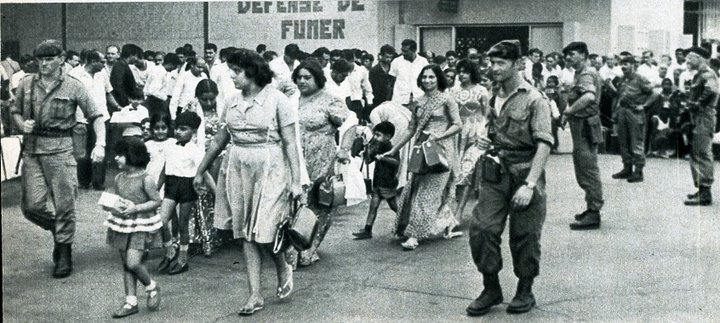
In November the 26th, Belgian troops were picked from Stanleyville airport for another rescue operation in the town of Paulis (Operation Black Dragon) , roughly 200 miles away. They jumped over Paulis airstrip at dawn in heavy fog and cleared and secured it for landing. More hostages were freed there.
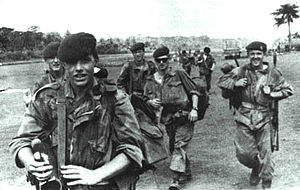
On November the 27th, the Belgian paras were flown to Kamina. 2 days later, they were on their way home.
Mission accomplished.
While militarily speaking the operation was a frank success, with over 2500 Western and Congolese hostages freed, it was a diplomatic and political disaster for all parties involved. The Congolese Prime Minister Moise Tshombe was criticised at home for his use of white mercenaries. He was dismissed in 1965.
The Soviet Union alongside the Eastern Bloc countries and Cuba accused Belgium and the USA of neocolonialism at the UN and pledged their support to rebellion groups throughout Africa.
Operation Red Dragon wasn’t the end of the Belgian army involvment in Congo/Zaire. The Paras went back in in 1978, Jumping over Kolwezi during operation Red Beans as the Congolese armed forces were again fighting a rebellion and European citizens found themselves in the middle of a battlefield.
In 1991, Kinshasa was the scene of riots and pillages. The Belgian army deployed again (Operation Blue Beam), and with the support of other European air forces, helped save and evacuate 4500 people, mainly of European roots.
